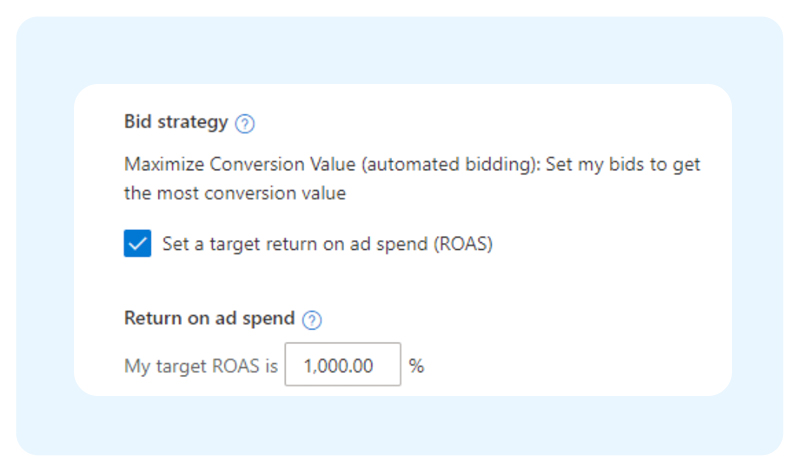[display-name-category]
[post_author]
Our relationship with Microsoft Ads gives us constant training and insights on their new tools and products. We are very excited to review Microsoft’s Smart Shopping campaigns that were announced in 2020 and see how they’re developing their Smart Campaigns and Smart Bidding strategies for advertisers.
These campaign options surpassed our expectations, and according to GlobalData, as of February 2021, Microsoft is in the top 5 companies with the most AI patent filings.
Valued as one of the top tech companies in the world, Microsoft leverages AI and machine learning in their advertising products. Its most recent and most successful AI-powered campaign is Smart Shopping.
In Q4 2020, our company participated in exclusive testing of the Smart Shopping Beta campaigns by Microsoft Ads. Today, I’m here to share our findings and gloat a little on the experience.
ROAS Increased by 277%
First, let’s review some critical data.
We tested these strategies on one of our top-traffic accounts to ensure fast-paced testing. When we compare Q1 2020 versus Q1 2021, the results are staggering.
- ROAS: Increased from 446% to 1,236%
- Transactions: +334%
- Revenue: +330%
The ad spend in 2021 is 19% higher than the previous period, but the difference is not big enough to affect the experiment.
When we perform these experiments, we want to make sure to compare the performance of the same volume of traffic/ad spend. In this case, it is hard to determine which one is better.
Based on our review, the Smart Campaigns did not perform better just because they had 19% more ad spend. It was because of other reasons.
Clients ask us if Smart Shopping campaigns are substantially better than the regular shopping campaigns. Below are the highlights that make these campaigns stand out and outperform the alternatives. It’s simply a matter of understanding the benefits that they offer and how the technical aspects of these strategies bring about results.
Bidding
Bidding is one of the most important differences to shopping campaigns when you’re comparing regular to Smart campaigns.
The regular shopping campaigns we ran in Q1 2020 used Manual CPC. This setting means that our strategists manually adjusted the bids at the Ad Group or Product levels for campaign optimizations. These tweaks include bid adjustments for campaign segments like locations, devices, scheduling, etc.
The new Smart Shopping campaigns have two default bidding strategies: Maximize Conversion Value and Target ROAS.
The “Maximize Conversion Value” setting is a new default, but if you enter a percentage value, it becomes Target ROAS bidding.

Product Level Bidding in Real-Time
There are many reasons why Smart Bidding is more efficient for advertising agencies.
The first and clearest distinction is that Smart Bidding has the real-time update capability. It updates the bidding value at every ad auction based on past data.
Manual bidding, on the other hand, enters into every ad auction with the same value, increasing the cost per transaction in the long run.
Second, Smart Bidding has more data available to make smarter decisions, no pun intended.
Digital marketers are limited to the data displayed on the user interface, but the data gathered per user is vast. The system covers more data than any one strategist could manage and uses this data to its advantage to deliver the ads.
Third, human error is inevitable. The system on the other hand doesn’t get tired or hungry, so it’s always on the ball. It will always adjust the bids objectively.
Smart Shopping & the Audience Network
When we launched the new Smart Shopping campaigns, there was a jump in impressions compared to the regular shopping campaigns. The ad spots available for Smart Shopping are broader in the Audience Network, which is composed primarily of MSN and Edge.
Microsoft Ads is well known for having a lower Search Impression Share across the web. However, access to other networks for Shopping campaigns like this contributes to increasing traffic volume and more opportunities for converting.
Microsoft’s Audience Network is improving rapidly, making it easier to drive action and brand awareness.
Campaign Settings
The Smart Shopping campaigns on Microsoft offer some settings that Google does not. For one, it allows advertisers to set specific scheduling or target locations. Additionally, you can set up tracking templates on your Smart Shopping campaign to tag your URLS, similar to how we do it on other campaign types.
Other than that, everything else is automated.
Conclusion
As previously mentioned, our relationship with Microsoft Ads gives us an in-depth understanding of their new tools and products.
The advances by Microsoft Ads on Smart Campaigns and Smart Bidding strategies for advertisers come highly recommended by our team for our clients, partners, and readers.
Learn more about how to employ these strategies by speaking to one of our experts today!




